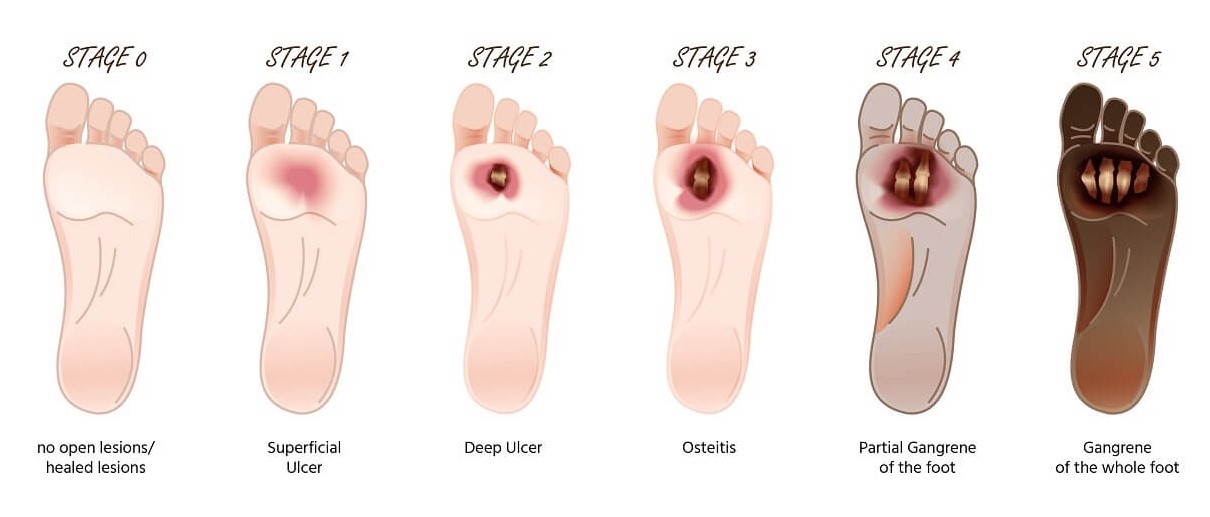Principles of Basic Wound Care
Total Questions : 4
Showing 4 questions, Sign in for moreA nurse is assessing a client with a pressure ulcer on the sacrum. Which finding indicates a potential complication of the wound?
Explanation
Correct answer: C) Foul-smelling greenish discharge from the wound
Rationale: Foul-smelling greenish discharge from the wound indicates a possible infection, which can delay wound healing and increase the risk of sepsis. The nurse should notify the provider and obtain a wound culture to identify the causative organism and guide antibiotic therapy.
Incorrect options:
A) Serous drainage from the wound - This is a normal finding, as serous drainage is clear and watery and indicates a healthy inflammatory response.
B) Redness and warmth around the wound - This is a normal finding, as redness and warmth indicate increased blood flow to the wound site, which facilitates healing.
D) Granulation tissue forming in the wound bed - This is a positive finding, as granulation tissue is new connective tissue that fills the wound and supports epithelialization.
A client with diabetes mellitus has a diabetic foot ulcer on the left heel. The nurse is preparing to apply a hydrocolloid dressing to the wound. What is an advantage of using this type of dressing?
Explanation
Correct answer: D) It stimulates autolytic debridement of necrotic tissue in the wound.
Rationale: Hydrocolloid dressings are occlusive or semi-occlusive dressings that adhere to the skin and form a gel-like substance over the wound. This creates a moist environment that stimulates autolytic debridement, which is the natural breakdown of necrotic tissue by enzymes in the wound fluid.
Incorrect options:
A) It provides a moist environment for wound healing. - This is true, but not specific to hydrocolloid dressings, as other types of dressings, such as hydrogels and alginates, also provide a moist environment for wound healing.
B) It absorbs large amounts of exudate from the wound. - This is false, as hydrocolloid dressings are not suitable for wounds with heavy exudate, as they can become saturated and leak. Alginates or foams are more appropriate for wounds with large amounts of drainage.
C) It allows frequent inspection of the wound without removal. - This is false, as hydrocolloid dressings are opaque and do not allow visualization of the wound. They should be left in place for several days, unless there are signs of infection or leakage.

A nurse is caring for a client who has undergone a skin graft to cover a burn injury on the right arm. Which intervention should the nurse include in the plan of care to promote graft adherence?
Explanation
Correct answer: C) Immobilize the right arm with a splint or sling
Rationale: Immobilizing the right arm with a splint or sling helps to prevent movement and shear forces that can dislodge or damage the graft. The nurse should also avoid applying pressure or friction to the graft site.
Incorrect options:
A) Elevate the right arm above the level of the heart - This is not necessary for graft adherence, but it may help to reduce edema and pain in the affected arm.
B) Apply negative pressure wound therapy to the graft site - This is contraindicated for skin grafts, as it can cause bleeding, infection, or graft loss. Negative pressure wound therapy is used for wounds that are difficult to heal by primary intention, such as chronic ulcers or open abdominal wounds.
D) Irrigate the graft site with normal saline twice daily - This is not recommended for skin grafts, as it can interfere with graft adherence and increase the risk of infection. The nurse should follow the provider's orders for dressing changes and use sterile technique.
A client has an arterial ulcer on the left lower leg. The nurse observes that the ulcer has a pale pink base, minimal drainage, and no signs of infection. What is an appropriate dressing for this ulcer?
Explanation
Correct answer: D) Hydrogel dressing
Rationale: Hydrogel dressings are water-based or glycerin-based gels that hydrate the wound and provide a moist environment for healing. They are suitable for dry wounds, such as arterial ulcers, as they help to rehydrate the wound bed and facilitate autolytic debridement.
Incorrect options:
A) Transparent film dressing - This is not an appropriate dressing for arterial ulcers, as it does not provide moisture or cushioning to the wound. Transparent film dressings are used for superficial wounds, such as abrasions or stage I pressure ulcers, or as a secondary dressing to cover other dressings.
B) Calcium alginate dressing - This is not an appropriate dressing for arterial ulcers, as it is designed for wounds with moderate to heavy exudate, such as venous ulcers or infected wounds. Calcium alginate dressings are highly absorbent and form a gel-like substance when in contact with wound fluid.
C) Silver-impregnated dressing - This is not an appropriate dressing for arterial ulcers, unless there is evidence of infection. Silver-impregnated dressings have antimicrobial properties and are used for wounds that are infected or at high risk of infection, such as diabetic foot ulcers or surgical wounds.
Sign Up or Login to view all the 4 Questions on this Exam
Join over 100,000+ nursing students using Nursingprepexams’s science-backend flashcards, practice tests and expert solutions to improve their grades and reach their goals.
Sign Up Now

